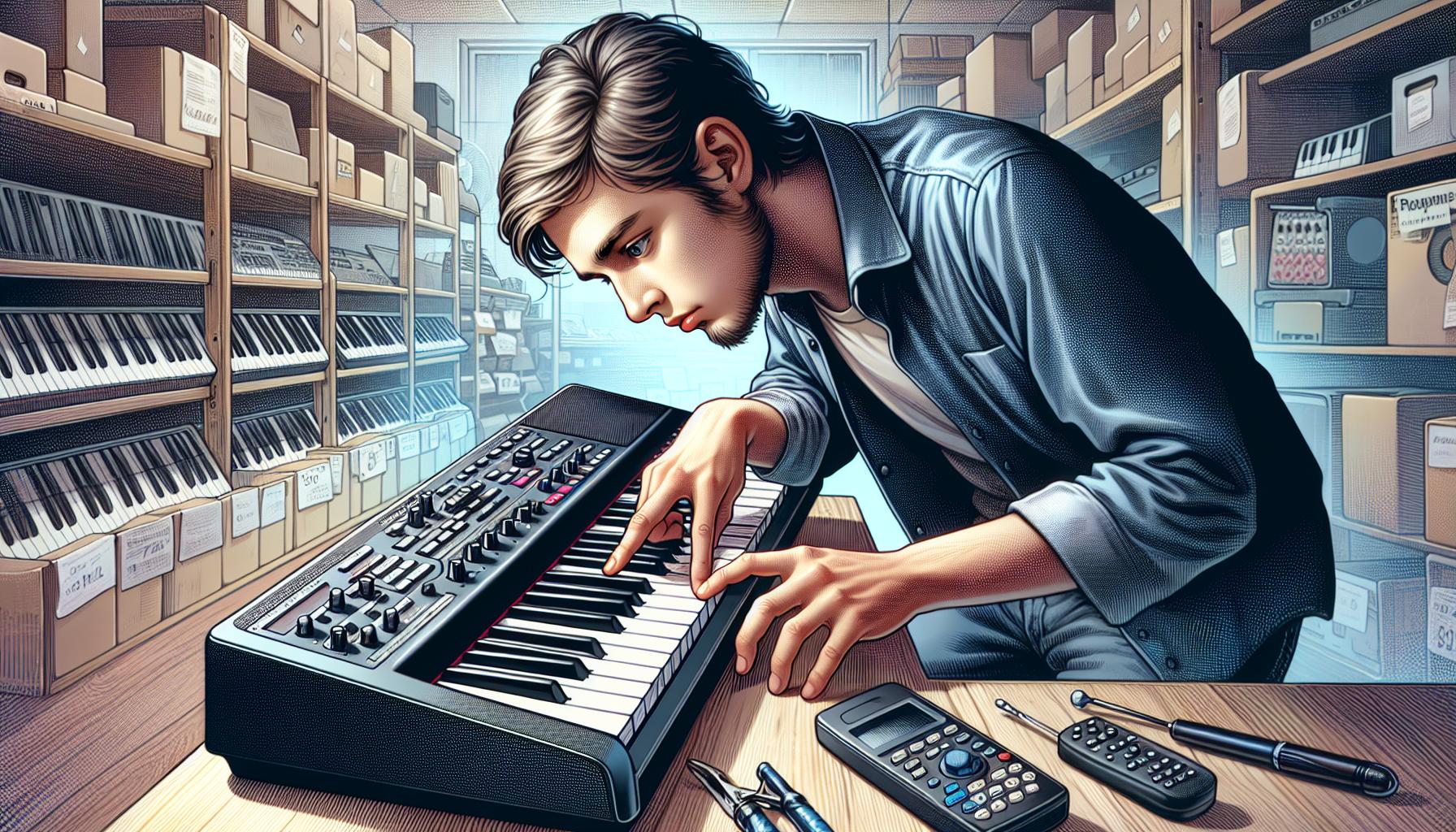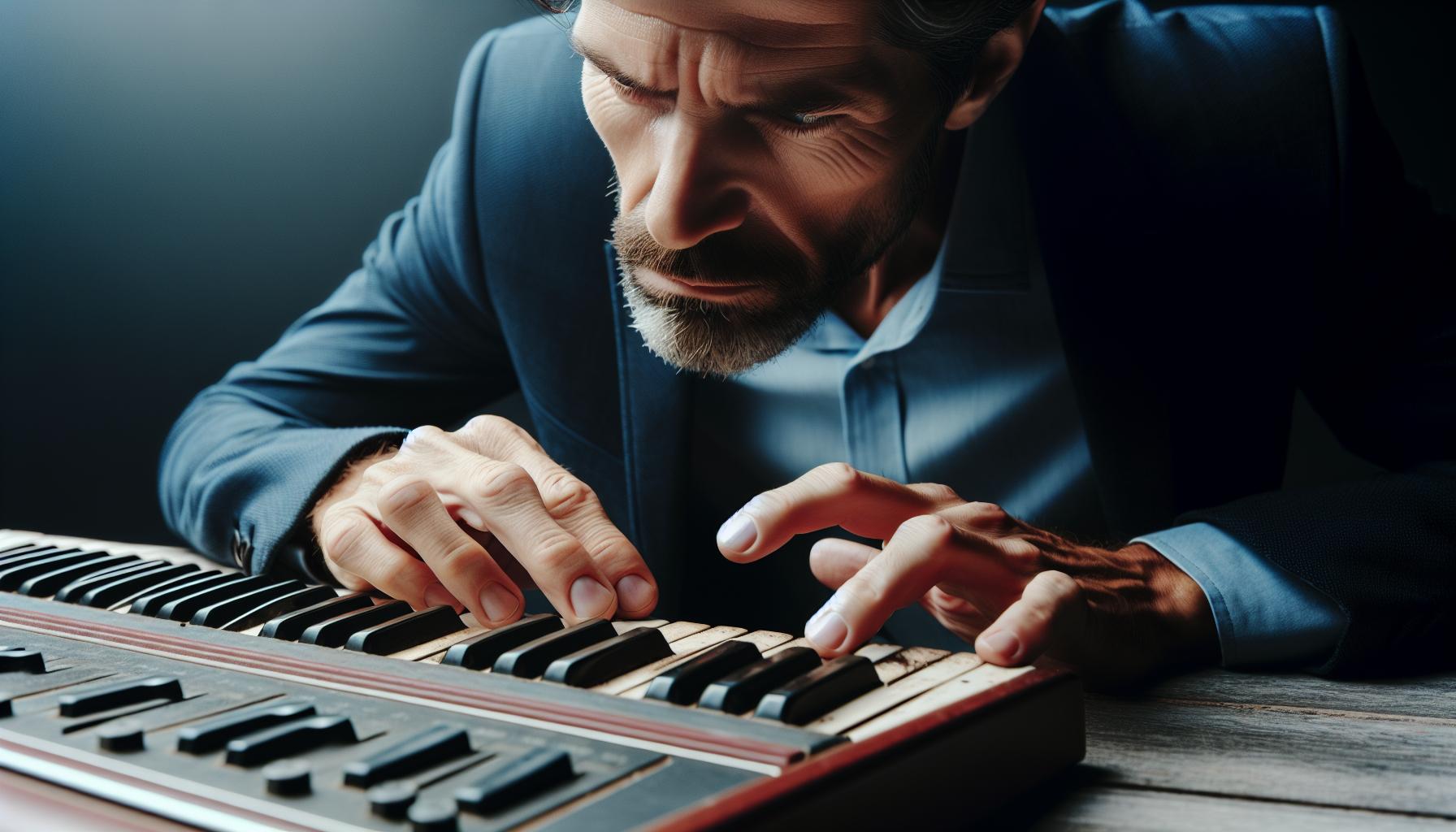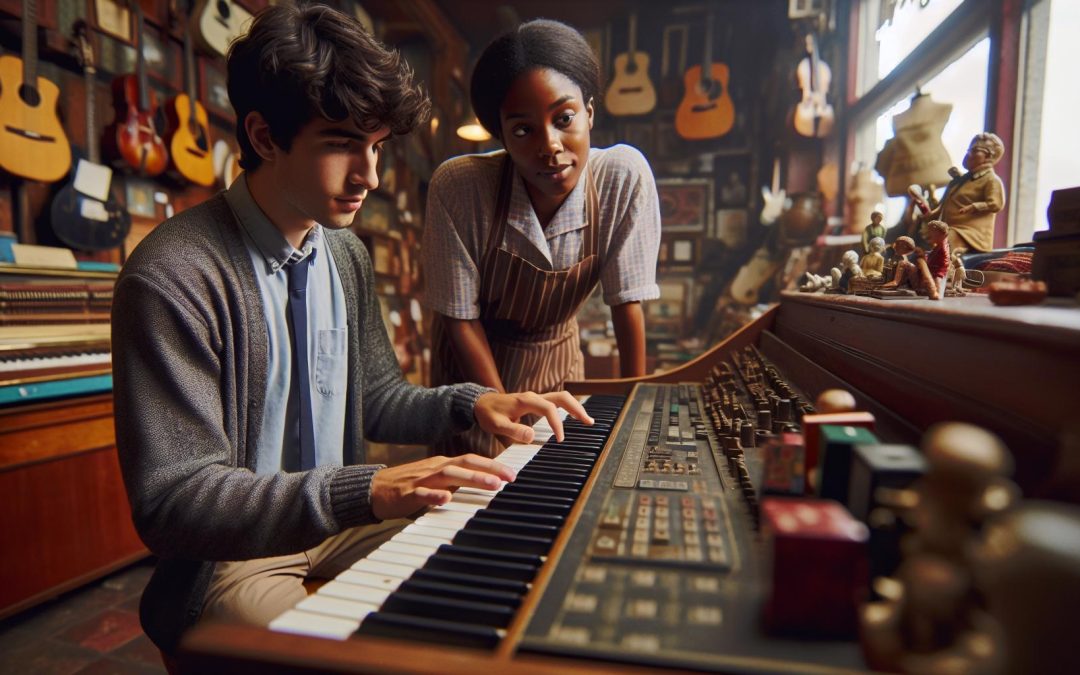Stepping into the world of music can be as thrilling as it is daunting, especially when it comes to choosing the right instrument. For beginners eager to tickle the ivories without breaking the bank, a used keyboard presents an appealing option. But is it really a good choice for those just starting their musical journey?
Navigating the second-hand market can be a bit like treasure hunting. There's the potential to uncover a gem that's perfect for learning the basics and beyond. Yet, it's also a realm where caution and knowledge are key. Let's dive into the pros and cons of opting for a used keyboard, helping beginners make an informed decision that harmonizes with their aspirations and budget.
Factors to Consider When Choosing a Keyboard for Beginners
Selecting the right keyboard is a crucial step for beginners on their musical journey. The market is flooded with options, ranging from brand-new, high-tech models to more budget-friendly used ones. Before diving into the decision, there are several important factors every beginner should consider.
Set a Budget
First and foremost, establishing a budget is essential. Keyboards come in a wide price range, and setting a budget helps narrow down the options. It's not uncommon for beginners to opt for more affordable models, such as used keyboards, to start their musical journey without breaking the bank.
Assess Your Goals
Understanding what you want to achieve is crucial. Are you dabbling in music as a hobby or do you have aspirations to become a professional musician? If it's just for fun, a basic model might suffice. However, if you're aiming for more advanced play, look for features that will grow with you.
Consider the Features
Keyboards come with a variety of features, some of which are more important for beginners than others. Here are a few to keep an eye out for:
- Weighted keys: offer a more realistic piano touch, which is helpful for learning proper finger technique.
- Touch sensitivity: allows for dynamic playing, making soft sounds softer and loud sounds louder based on how hard the keys are pressed.
- Number of keys: a standard piano has 88 keys, but beginners might start with a keyboard that has fewer. Just ensure it meets your long-term learning goals.
Think About Portability
For many beginners, especially younger players or those with limited space, portability might be a significant factor. Smaller keyboards are easier to transport and store when not in use.
Research Brand and Model Reliability
Before making a purchase, especially when considering a used keyboard, researching the brand and specific model is vital. Look for reviews and ratings from other users to gauge reliability, durability, and overall satisfaction.
Sound Quality
Sound quality is often tied to price, but advances in technology have made even lower-priced keyboards sound decent. Beginners should look for a keyboard that offers clear, natural sounds to make the learning process more enjoyable and effective.
Connectivity Options
In today's digital age, having a keyboard with connectivity options such as USB ports can be a huge plus. This feature allows beginners to connect to computers and mobile devices for educational apps and software, expanding learning opportunities.
Advantages of Purchasing a Used Keyboard

When embarking on the musical journey, beginners often face the challenge of finding a high-quality instrument that fits within their budget. Opting for a used keyboard presents a plethora of benefits that can make this quest both economical and rewarding. One of the pivotal advantages of purchasing a used keyboard is the cost-effectiveness it offers. By exploring the second-hand market, beginners can gain access to high-end models that were otherwise out of reach due to their steep new prices.
Cost-Effectiveness
Used keyboards are significantly cheaper than their brand-new counterparts. This price difference allows beginners to allocate more of their budget towards other essential resources, such as music lessons or additional equipment. For instance:
| Condition | Average Price of Beginner Keyboard | Average Price of High-End Keyboard |
|---|---|---|
| New | $300 | $1,500 |
| Used | $150 | $750 |
This table illustrates the potential savings avid learners can achieve by opting for used instruments. The money saved can be used to invest in learning materials or even in upgrading other gear related to their musical venture.
Access to Higher Quality Instruments
Another compelling advantage is the access to higher quality instruments. Beginners often start with lower-end models due to budget constraints, limiting their potential learning experience. However, a used market opens up opportunities to buy mid to high-end keyboards at a fraction of the cost, offering superior sound quality, build, and features that can enhance the learning process. This access not only improves the beginner’s practice sessions but also prolongs the instrument's relevance as the player's skills advance.
Environmental Sustainability
Moreover, purchasing a used keyboard promotes environmental sustainability. Every used keyboard bought is one less new instrument that needs to be produced, reducing the demand for raw materials and energy consumption associated with manufacturing. This choice not only benefits the individual buyer but also contributes to a larger movement towards reducing waste and supporting a more sustainable economy within the music industry.
Risk Mitigation With Research
While the advantages are compelling, potential buyers should approach the purchase with diligence. Researching the model, checking for wear and tear, and even playing the instrument before purchasing if possible are critical steps in ensuring the used keyboard meets their expectations. Online forums, reviews, and trusted sellers are valuable resources for making an informed decision.
Potential Drawbacks of Opting for a Second-Hand Keyboard

While buying a used keyboard presents numerous advantages, especially for beginners, it's vital to consider the potential drawbacks to make an informed decision. Second-hand musical instruments, including keyboards, can come with their own set of challenges and risks that buyers need to be aware of.
One major concern is the condition of the instrument. A used keyboard may have hidden wear and tear that isn't immediately apparent. This can include anything from sticky keys, malfunctioning buttons, to internal electronic issues that can affect the sound quality and the overall playing experience. Regular maintenance might have been neglected by the previous owner, leading to unforeseen repair costs down the line.
Another factor to consider is the lack of warranty and return policy. Most new keyboards come with manufacturer warranties and return policies that provide a safety net should there be any issues with the instrument. However, second-hand purchases, especially from individual sellers, often do not offer these protections. This means if the keyboard has any problems, the buyer might be left with a faulty instrument and no recourse for refunds or exchanges.
The availability of accessories and parts can also pose challenges. Older keyboard models might not have easily accessible replacement parts or compatible software updates. This could limit the instrument's lifespan and potentially increase costs if parts need to be sourced from specialized dealers.
Furthermore, the technological advancement in musical instruments means newer models often come with updated features and better sound quality. Beginners might miss out on these improvements by opting for an older, used model. While this might not impact the foundational learning experience, it could limit their progression and exploration of more advanced techniques and sounds later on.
Before making a decision, it's crucial for potential buyers to:
- Inspect the keyboard thoroughly, ideally with someone knowledgeable about musical instruments.
- Test the instrument to ensure all keys and functions are working as intended.
- Research the specific model to understand its features, common issues, and whether it meets their learning needs.
- Consider the cost of potential repairs and upgrades in comparison to the price of a new keyboard with similar features.
Balancing the cost savings with these potential drawbacks will help beginners choose a keyboard that best suits their musical journey without unnecessary setbacks.
Tips for Ensuring You Get a Quality Used Keyboard

Purchasing a used keyboard can indeed be a savvy move for beginners, but it's crucial to make sure that the instrument they're investing in is of good quality and won't hamper their learning progress. Here are several tips to help ensure a successful purchase.
Thorough Inspection is Key
Before laying down any money, buyers should conduct a comprehensive inspection of the keyboard. This means examining the body for any signs of damage, such as cracks or significant scratches that could indicate it has been dropped or mishandled. The keys should be another focal point; they must feel responsive and spring back quickly after being pressed. Sticky or unresponsive keys can be a nuisance and affect playing accuracy.
Test All the Functions
It's important not to take the seller’s word for it. Buyers should test every single function of the keyboard themselves. This includes playing every key to ensure they produce sound, checking the volume controls, testing all the sound settings, and making sure connectivity ports for headphones or amplifiers work correctly. This step helps buyers discover any potential issues that might not be apparent during a visual inspection.
Ask for the Keyboard’s History
Knowing the keyboard's history can provide valuable insights into its condition and how well it's been cared for. Buyers should ask how old the instrument is, whether it's been used for gigs, and if it has undergone any repairs. This information can reveal a lot about the keyboard’s longevity and any immediate repairs or replacements that might be needed.
Research the Model
Doing some homework on the model of the keyboard can save a lot of trouble later. Buyers should look up reviews, find out if the model has any known issues, and check if it supports the features they need for their learning journey. Sometimes, older models may lack useful learning features found in newer keyboards, such as built-in lessons or connectivity to learning apps.
Consider Potential Extra Costs
Buying a used keyboard can indeed be more cost-effective, but it might come with additional costs down the line. If the keyboard needs repairs or replacement parts, those costs should be factored into the purchase decision. Buyers might also want to upgrade certain aspects of the keyboard, such as its stand or pedals, to enhance their playing experience. Estimating these costs beforehand can help ensure that the purchase remains a financially sound decision.
Conclusion
Opting for a used keyboard can indeed be a smart choice for beginners eager to embark on their musical journey without breaking the bank. By paying close attention to the condition and compatibility of the instrument, learners can ensure they're not only saving money but also investing in a tool that truly supports their growth. It's about striking the right balance between cost-effectiveness and quality. Armed with the right knowledge and a careful approach, beginners can find a used keyboard that feels tailor-made for their musical aspirations. So, don't shy away from considering a pre-loved instrument as your first step into the world of music.
Harlan Kilstein began playing piano during covid with no piano background at all. He taught himself how to play learning what to do and what not to do.
Today he's an advanced intermediate player and can help you grow in your skills because he learned all this on his own.








